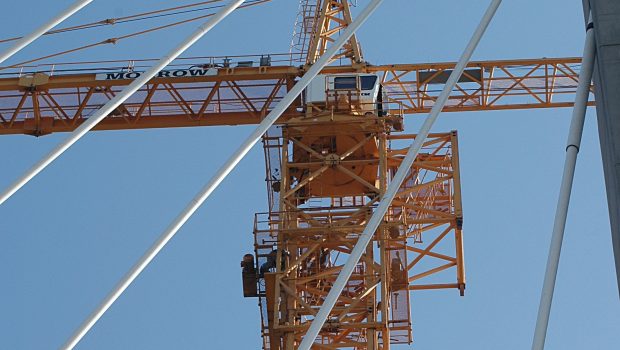As a contractor, builder, or project manager, choosing a crane hire company can be a challenging task as it is crucial that you hire the equipment from a reliable, high-quality company with true expertise in their field.
Cranes are necessary for a wide array of situations, and since there are specific cranes that are designed to be used for particular projects, it is also imperative that you identify the type of crane your project requires.
In addition to asking your network for recommendations, you also want to make sure that any crane hire company you choose to work with offers four essential tower crane services.
These four services (site planning, base engineering, installation and commissioning, and operator training) are necessary to assure you that the equipment is going to be used and managed optimally. Furthermore, you want to trust that the work is going to be completed as efficiently as possible and that no unnecessary expenses or unsafe conditions are occurring on your building site.
Before you agree to work with a tower crane hire company, read on for an explanation of each of these four essential steps when operating a tower crane.
1. Site Planning
As rules are continuously changing, it is essential that you work with a crane hire operator who not only knows which is the correct type of crane for your project, but also recognizes where the crane should be situated in order to have the most active plan.
Site planning is one of the most crucial services that a crane hire company can offer because it includes the management of the site address, project details, architectural drawings, the variety of construction materials necessary, a profile of the proposed material handling area, and customary entrance specifications for the vehicles.
It is essential that you deal with site planning services from the get-go as they often entail continuous research and updated knowledge of ordinances and local constraints of all varieties of governing bodies.
2. Base Engineering
For the safety of the crane, the project site, and the workers, base engineering is critical. Base engineering refers to the support of the crane and ensures that the crane is installed appropriately. This has to be engineered and approved by an accredited and thoroughly qualified structural engineer.
It is highly recommended that you hire a crane from a company that performs this in-house as they know their products the best. They are also aware of what needs to be done and check to eliminate safety issues and avert potentially expensive adjustments.
Base engineering must include geotechnical site-specific information, structural and architectural drawings, and site-specific surveys of the heights of enclosing structures.
3. Installation and Commissioning
Additionally, it is highly suggested that you hire a crane from a firm that also keeps their installation and commissioning in-house. Similar to the base engineering step, the installation and commissioning should be done by highly qualified professionals who deeply understand the machines they are working with.
Speak with a potential crane hire company about how they plan to transport the equipment to your site and how they are going to install it.
If they keep this part in-house, then they will have the requisite infrastructure to service, move, place, sustain and take down the crane with minimal to no dependence on additional workers. This will save you a lot of money and will make the process more efficient and straightforward.
Prior to the work beginning, you should be preparing the site and coordinating with the relevant agencies to ensure the adherence to ordinances and to reduce disturbance of local businesses and residential properties.
Make sure that there is sufficient electrical power on the premises and that anyone who isn’t involved with operating the crane is kept out of the site to decrease confusion and overcrowding.
After the installation phase, commissioning will begin, and this involves a comprehensive examination of the crane and the setting of the specified overload limits. It is only after these have transpired that the crane will be validated as usable — never use a crane before this has happened.
4. Operator Training
One of the main advantages of tower crane rental is that the equipment will come with a skilled and experienced operator who knows how to operate the powerful piece of machinery carefully.
Don’t allow just anyone to utilize the crane! This never works out well (as you can imagine).
If a crane hire company has its own crane operator training program, this is an excellent sign that they take their work seriously and that they are committed to providing the highest-quality service.
What do you look for when choosing a crane hire company? Let us know in the comments below!
AUTHOR BIO
Hermann Buchberger is the Founder and CEO of Active Crane Hire (ACH). He’s taken the company from start-up to Industry Leader offering the largest fleet of construction cranes in Australia. ACH launched a new type of crane previously unheard of in the Australian market: electric tower cranes. The company’s infrastructure and associated services now comprise a fleet of trucks and trailers, rigging services las vegas, nv, mobile crane technicians, a fleet of service vehicles, and an extensive range of crane spare parts.





